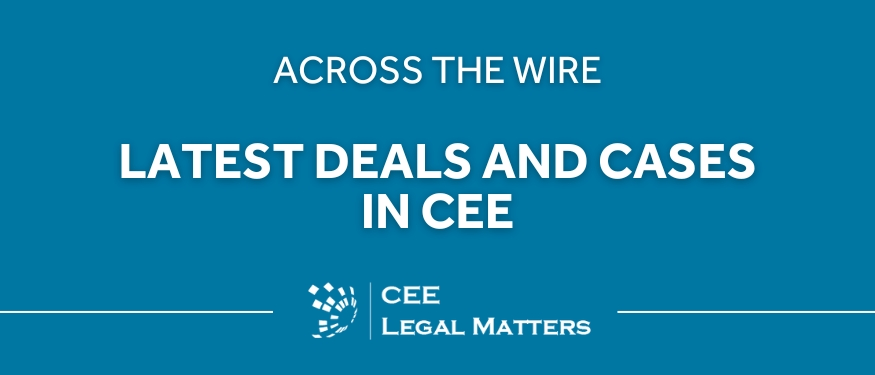On 27 June 2025, the Assembly of North Macedonia adopted a new Electronic Communications Act (ECA). This landmark legislation represents a comprehensive overhaul of the country's digital regulatory framework, aligning it with the European Electronic Communications Code (Directive 2018/1972) (the "Directive") and the Gigabit Infrastructure Act (Regulation 2024/1309) (the "Regulation").
Through this harmonisation, the country aims to raise service quality by improving connectivity speed and coverage, making network investments more attractive and encouraging shared use of high-capacity infrastructure, including 5G networks.
The Directive introduces stronger consumer protections, ensuring transparent service terms, improved access for users with disabilities and fairer contract conditions – such as capped durations and simpler provider switching. In parallel, it reaffirms the obligation to guarantee universal broadband access where market coverage is lacking.
The Regulation further supports these goals by promoting coordinated civil works, streamlined administrative procedures and the installation of high-speed-ready infrastructure in buildings.
Wireless access
The new ECA introduces two entirely new provisions aimed at enhancing wireless connectivity nationwide. First, it regulates local radio networks by allowing public communications operators to offer wireless internet access from private locations, provided they have the end-user's prior consent. Non-commercial entities such as public institutions and non-government organisations are exempt from regulatory obligations when the service is not part of a commercial activity. The new ECA also prevents commercial operators from blocking user access to third-party networks or from restricting reciprocal sharing between users.
Second, the act streamlines the installation of short-range wireless access points. When basic technical and physical standards are met, no construction or urban planning permits are required, unless the site is protected for cultural or environmental reasons. Operators are granted the right to install equipment on public infrastructure such as streetlights and bus stops, and public institutions must respond to such requests under fair, non-discriminatory conditions. Fees, if charged, must reflect only actual processing costs, and no fees may be imposed when the infrastructure is publicly owned. The AEC will regulate the process, issue technical guidelines through a bylaw and maintain a public registry of installed access points.
National broadband mapping
The new act mandates regular national assessments of broadband network coverage. At least once every three years, the AEC must review and publish data on existing and planned broadband services, including future projections. Areas without 100 Mbps service, either current or planned, will be publicly designated as underdeveloped zones. These designations provide the basis for targeted state aid, policy support and public-private investment programmes.
Strengthening access to existing infrastructure
The legal basis for requesting access to the physical infrastructure of other network operators is now clearer and more detailed. Operators can no longer deny access based on broad discretion. Instead, refusals must now be limited to specific, objectively justifiable grounds. These include situations where the infrastructure lacks technical compatibility with the proposed installation, or where there is insufficient space to accommodate the requested equipment, provided that any claims of spatial limitations, including future capacity needs, are substantiated with detailed justification.
Access may also be refused if there are concerns related to public health, or where the requested access would compromise the integrity or security of a network, particularly if it involves critical infrastructure. In addition, network operators may reject requests if granting access would result in serious interference, or if an equivalent wholesale-level access option is already available under fair and reasonable terms, capable of supporting high-speed electronic communications.
To promote procedural efficiency, the response deadline for such access requests has been reduced from 60 to 30 days. Importantly, investment protection now applies not only to recently built infrastructure but to all installations where significant financial input has been made.
Ensuring competition
The new ECA brings a more structured and robust framework. Operators with exclusive or special rights in other sectors must now either separate their accounts with detailed cost breakdowns or establish a distinct legal entity. Unlike before, the new act imposes stricter financial disclosure, mandates public financial and audit reports even for smaller operators, and grants the AEC authority to initiate audits if non-compliance is suspected. On infrastructure sharing and colocation, the new act significantly expands the scope, explicitly listing elements such as antennas, ducts and cabinets, while mandating access through a contractual basis with compensation, all subject to clearly defined secondary legislation. Importantly, the AEC now holds stronger authority to impose both passive and active sharing obligations, especially in underserved areas or where infrastructure duplication is deemed economically or physically impractical. Additionally, a new emphasis is placed on supporting VHCN development and promoting local and cross-border connectivity through proportionate, transparent and non-discriminatory access rules.
Market regulation and dominant operators
The new ECA introduces a more structured approach to voluntary separation by operators with significant market power. Unlike the previous framework, the new act mandates a minimum three-month advance notice to the AEC and allows operators to propose binding commitments for access conditions during and after the separation process. These commitments are now subject to detailed review, public consultation and formal decision-making, ensuring alignment with broader regulatory goals and protecting third-party interests. Crucially, the AEC gains stronger oversight powers to monitor, enforce and extend such obligations beyond the regular market analysis cycle. Complementing this shift is a new mechanism for joint investment in Very High Capacity Networks (VHCNs). For the first time, operators with significant market power may offer structured co-investment proposals, covering shared ownership, risk-sharing agreements and wholesale access terms, which the AEC can evaluate and, if conditions are met, declare binding. These proposals must guarantee fair, open and non-discriminatory access to all operators throughout the network's lifecycle, while incentivising participation in infrastructure roll out. When such co-investment schemes are in place and at least one partner commits, the AEC is empowered to waive additional obligations for the covered VHCN elements, promoting efficient deployment without compromising competition. Regular compliance monitoring and the possibility of re-imposing obligations in problematic markets further strengthen this modernised regulatory tool set.
End-user protection
The new ECA introduces a more comprehensive and user-oriented regulatory regime for end users and operators. It mandates that operators provide contracts in a clearer, more detailed and accessible format, explicitly listing all essential service elements, quality parameters and user rights, including compensation and dispute resolution mechanisms. The new ECA strengthens consumer protection by requiring operators to offer both 12- and 24-month contract options, introduces stricter rules on automatic renewals, and ensures users can terminate contracts without penalty in cases of non-fulfilment or unfavourable changes. Number portability is streamlined, with a one-day transfer process, no end-user charges, and automatic contract termination upon switching, while bundled service packages are now subject to unified consumer rights across all elements. The act also expands transparency obligations, requiring operators to publish up-to-date, comparable information on prices and service quality, and obliges the AEC to provide an independent comparison tool for consumers. Furthermore, the new framework introduces explicit provisions for open internet access, enhanced data protection and public interest information dissemination, aligning national regulation with modern EU standards and best practices.
Entry into force
Operators will be required to align their operations in accordance with the ECA and to provide all necessary technical means and organisational measures within 18 months of its entry into force. The ECA will enter into force on the eighth day following its publication in the Official Gazette of the Republic of North Macedonia and will start to apply from 1 June 2026.
By Margareta Krsteska, Senior Attorney at Law, and Filip Zafirovski and Andrea Lazarevska, Attorneys at Law, Schoenherr














